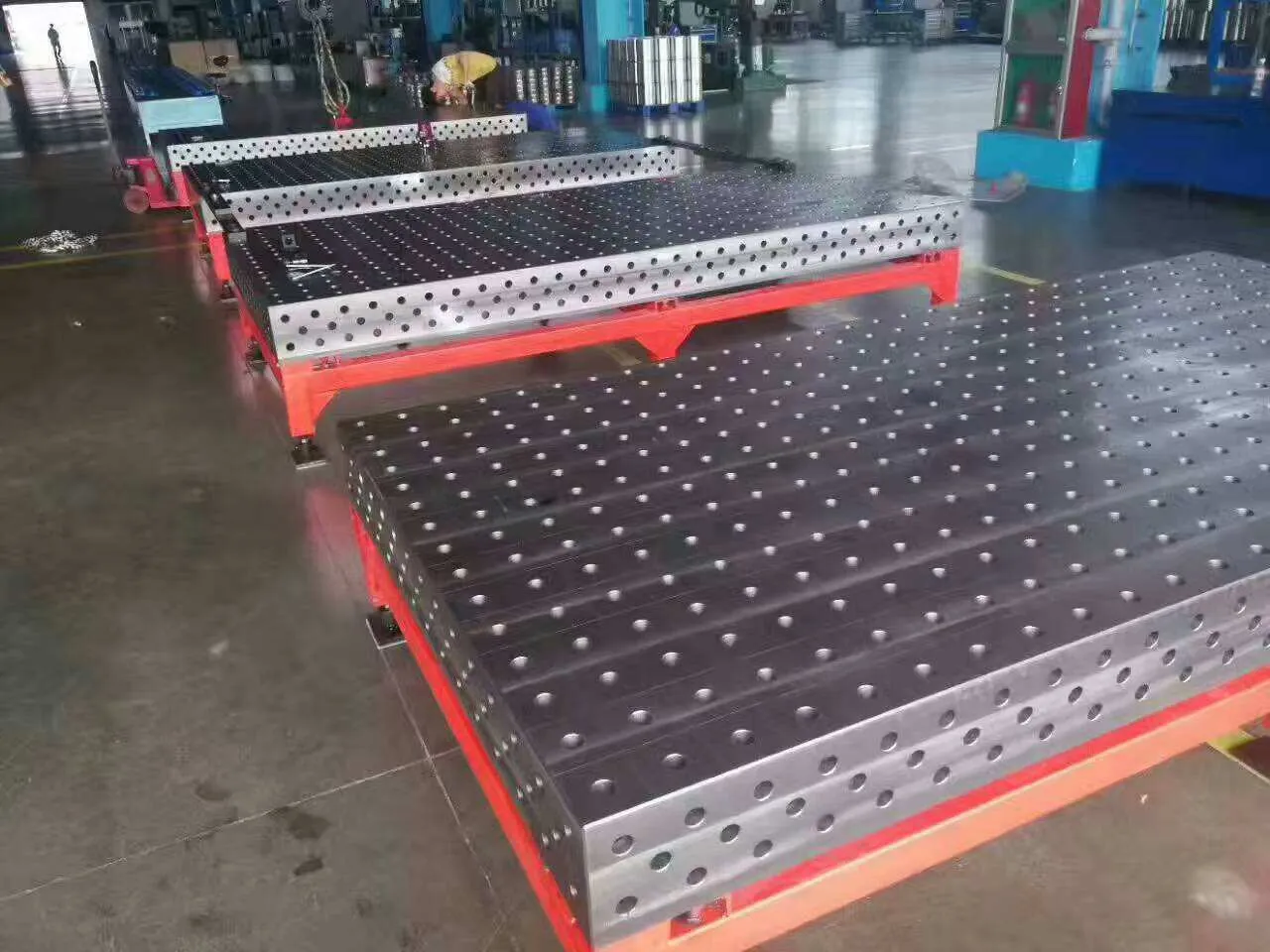Dec . 07, 2024 14:39 Back to list
cast iron surface table
Understanding Cast Iron Surface Tables A Comprehensive Guide
Cast iron surface tables are indispensable tools in modern engineering and manufacturing environments. Known for their exceptional flatness, strength, and stability, these tables offer a reliable foundation for precision measurement, assembly, and machining processes. In this article, we will delve into the characteristics, benefits, and applications of cast iron surface tables, providing valuable insights for professionals across different sectors.
What is a Cast Iron Surface Table?
A cast iron surface table is a large, flat surface made from cast iron, designed specifically for measuring and checking workpieces. These tables are engineered to achieve a high degree of flatness and stability, crucial for ensuring accurate measurements in fabrication and inspection processes. Typical dimensions can range from small benches to extensive surfaces measuring several meters across, accommodating various industrial needs.
Characteristics of Cast Iron Surface Tables
1. Material Composition Cast iron is favored for its excellent dampening properties, which minimize vibrations during machining operations. The material’s rigidity also prevents warping, ensuring that the surface remains flat over time.
2. Flatness One of the most critical attributes of a surface table is its flatness. High-precision cast iron tables are manufactured to strict tolerances, often within a few micrometers. This precision is vital for accurate measurements and consistent results in engineering applications.
3. Thermal Stability Cast iron is known for its ability to withstand temperature changes without significant dimensional alteration. This property is particularly beneficial in environments where temperature fluctuations are common, ensuring the integrity of measurements.
4. Durability Cast iron surface tables are designed for longevity. With proper care, these tables can last for decades, making them a cost-effective investment for businesses.
Benefits of Using Cast Iron Surface Tables
1. Precision Measurement The high flatness and durability of cast iron surface tables make them ideal for precision measurement applications. They are widely used in conjunction with coordinate measuring machines (CMMs), dial indicators, and other measuring instruments.
cast iron surface table

2. Versatility Cast iron surface tables can accommodate a wide range of tasks, including layout work, assemblies, and inspection of components. This versatility makes them an excellent choice for machine shops, inspection labs, and manufacturing facilities.
3. Resistance to Wear Compared to other materials, cast iron resists wear and tear effectively. This resistance helps maintain the table’s flatness over time, contributing to long-lasting performance and measured reliability.
4. Cost-Effectiveness While the initial investment in a cast iron surface table may be higher than other materials, its longevity and stability ultimately lead to cost savings. Reduced replacement and calibration costs make it a financially sound choice in the long run.
Applications of Cast Iron Surface Tables
Cast iron surface tables are utilized across various industries, including
- Manufacturing In machine shops, these tables serve as the base for layouts and assembly of parts, allowing for quick and easy verification of dimensions. - Quality Control Inspectors use these tables to check the dimensions of machined parts against specifications, ensuring adherence to quality standards. - Tool Making Tool makers rely on the flatness of cast iron tables to produce precision tools such as jigs and fixtures, essential for automated manufacturing processes.
- Educational Institutions Technical schools and universities often incorporate cast iron surface tables in their curricula to teach students the principles of precision engineering and measurements.
Maintenance and Care
To ensure the longevity of cast iron surface tables, proper maintenance is required. Regular cleaning, lubrication (to prevent rust), and periodic inspections for flatness can help maintain the table’s performance. Additionally, avoiding heavy impact or overload will preserve the integrity of the surface.
Conclusion
Cast iron surface tables play a crucial role in the precision-centric world of modern manufacturing and engineering. Their unique properties—such as exceptional flatness, durability, and thermal stability—make them an essential tool for a variety of applications, ranging from layout work to quality control. Investing in a high-quality cast iron surface table can lead to improved efficiency, accuracy, and reliability in measuring and manufacturing processes, making them a vital component of any industrial toolkit.
-
Precision Manufacturing with Advanced Spline Gauge DesignNewsJul.31,2025
-
Industrial-Grade Calibrated Pin Gauges for Exact MeasurementsNewsJul.31,2025
-
Industrial Filtration Systems Depend on Quality Filter DN50 SolutionsNewsJul.31,2025
-
High-Performance Gate Valve WholesaleNewsJul.31,2025
-
Granite Surface Plate The Ultimate Solution for Precision MeasurementNewsJul.31,2025
-
Granite Industrial Tools The Ultimate Guide for Bulk BuyersNewsJul.31,2025
Related PRODUCTS









